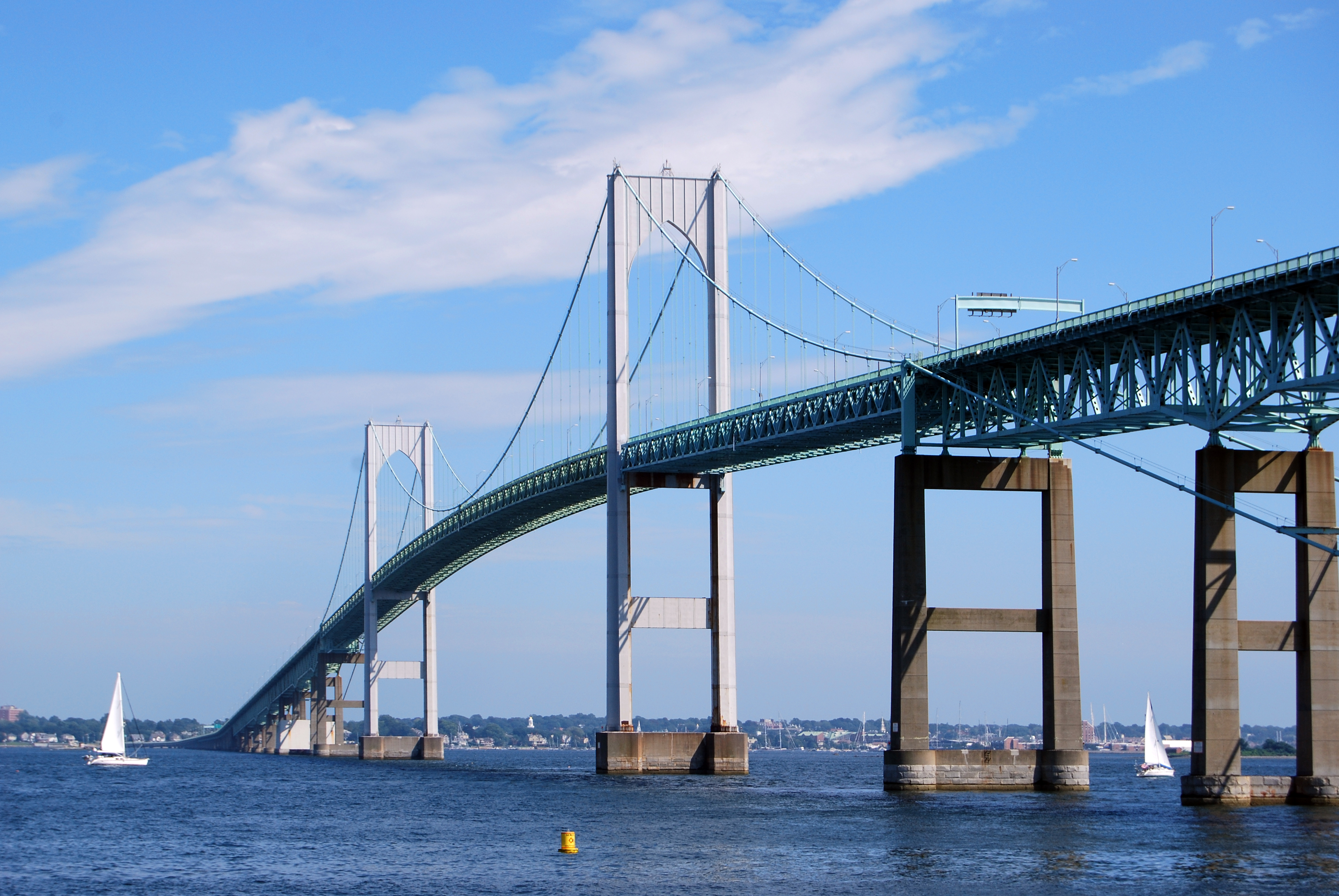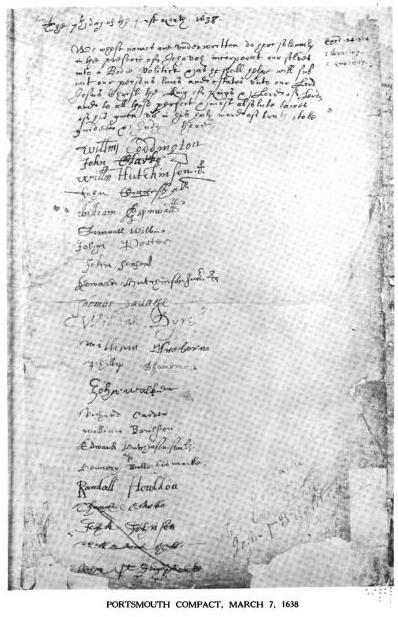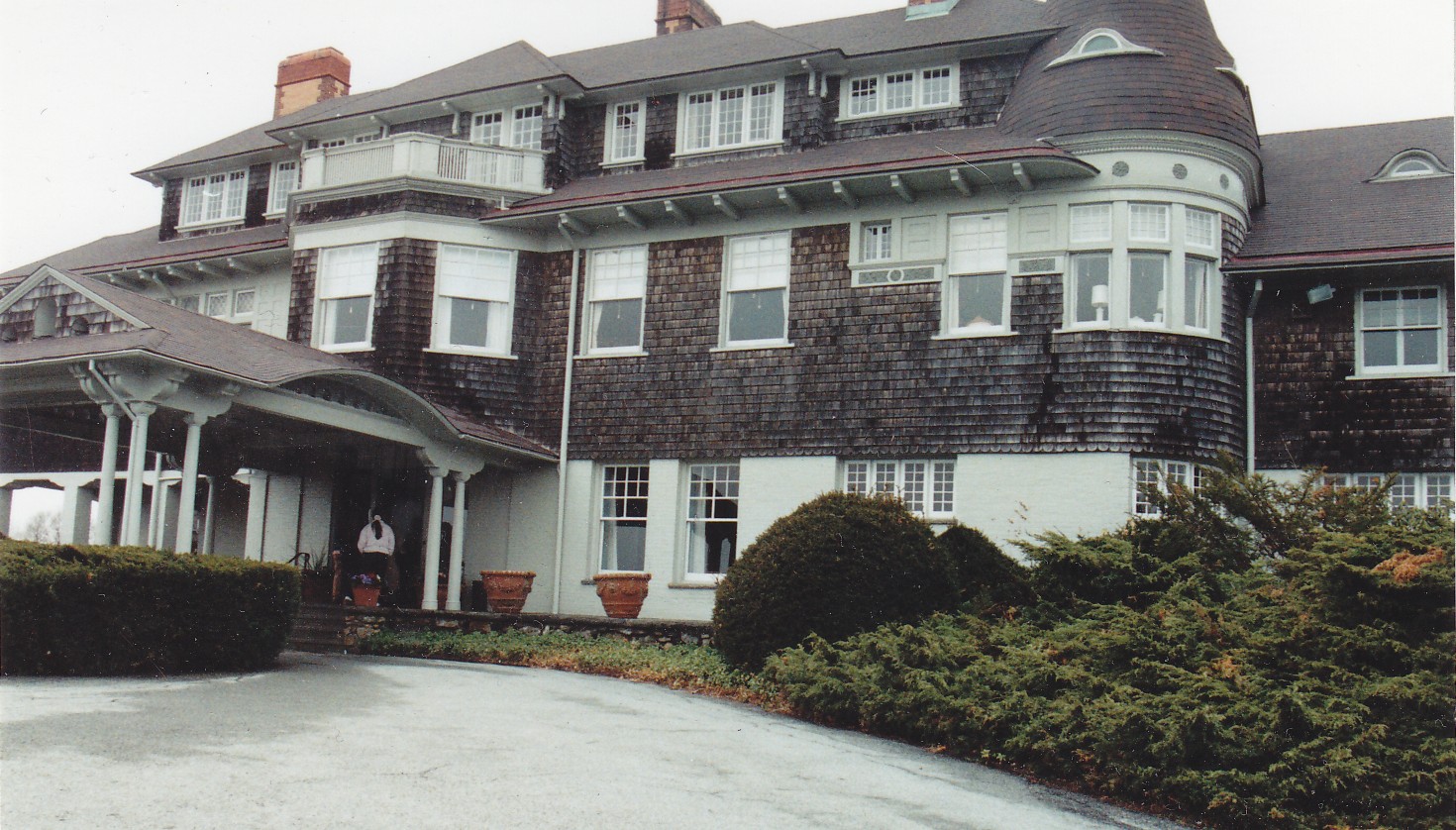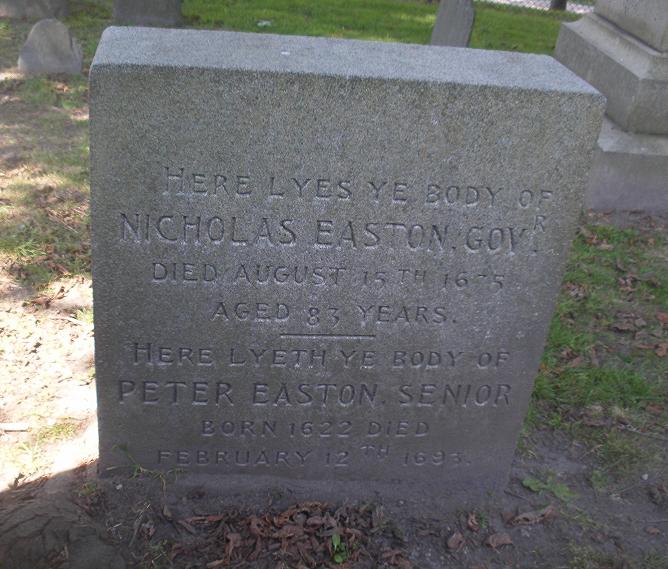|
Rhode Island (landform)
Aquidneck Island ( ), officially known as Rhode Island, is an island in Narragansett Bay in the state of Rhode Island. The total land area is , which makes it the largest island in the bay. The 2020 United States Census reported its population as 60,109. The state of Rhode Island is named after the island; the United States Board on Geographic Names recognizes Rhode Island as the name for the island, although it is widely referred to as Aquidneck Island in the state and by the island's residents. Aquidneck Island is home to three towns: from north to south, Portsmouth, Rhode Island, Portsmouth, Middletown, Rhode Island, Middletown, and Newport, Rhode Island, Newport. Etymology "Aquidneck" is derived from the Narragansett language, Narragansett name for the island ''aquidnet''. Roger Williams was an authority on the Narragansett language, but he stated that he never learned the word's meaning. Island names over time It is unclear how Aquidneck came to be known as Rhode Island, b ... [...More Info...] [...Related Items...] OR: [Wikipedia] [Google] [Baidu] |
Narragansett Bay
Narragansett Bay is a bay and estuary on the north side of Rhode Island Sound covering , of which is in Rhode Island. The bay forms New England's largest estuary, which functions as an expansive natural harbor and includes a small archipelago. Small parts of the bay extend into Massachusetts. There are more than 30 islands in the bay; the three largest ones are Aquidneck Island, Conanicut Island, and Prudence Island. Bodies of water that are part of Narragansett Bay include the Sakonnet River, Mount Hope Bay, and the southern, tidal part of the Taunton River. The bay opens on Rhode Island Sound and the Atlantic Ocean; Block Island lies less than southwest of its opening. Etymology "Narragansett" is derived from the southern New England Algonquian languages, Algonquian word meaning "(people) of the small point of land". Geography The watershed of Narragansett Bay has seven river Drainage basin, sub-drainage basins, including the Taunton River, Taunton, Pawtuxet River, Pawt ... [...More Info...] [...Related Items...] OR: [Wikipedia] [Google] [Baidu] |
Miantonomi
Miantonomoh (1600? – August 1643), also spelled Miantonomo, Miantonomah or Miantonomi, was a chief of the Narragansett people of New England Indians. Biography He was a nephew of the Narragansett grand sachem, Canonicus (died 1647), with whom he associated in the government of the tribe, and whom he succeeded in 1636. Miantonomoh seems to have been friendly to the English colonists of Massachusetts, Rhode Island, and Connecticut, though he was accused of being treacherous. In 1632 Miantonomoh and his wife Wawaloam traveled to Boston to visit with Governor John Winthrop. In 1636, when under suspicion, Miantonomoh went to Boston to prove his loyalty to the colonists and deny allegations of infidelity. In the following year, during the Pequot War, he permitted John Mason to lead his Connecticut expedition against the Pequot Indians through Narragansett country. The Pequot were defeated in this war. In 1638, he signed for the Narragansett the tripartite treaty between that trib ... [...More Info...] [...Related Items...] OR: [Wikipedia] [Google] [Baidu] |
Massachusetts Bay Colony
The Massachusetts Bay Colony (1628–1691), more formally the Colony of Massachusetts Bay, was an English settlement on the east coast of North America around Massachusetts Bay, one of the several colonies later reorganized as the Province of Massachusetts Bay. The lands of the settlement were in southern New England, with initial settlements on two natural harbors and surrounding land about apart—the areas around Salem, Massachusetts, Salem and Boston, Massachusetts, Boston, north of the previously established Plymouth Colony. The territory nominally administered by the Massachusetts Bay Colony covered much of central New England, including portions of Massachusetts, Maine, New Hampshire, and Connecticut. The Massachusetts Bay Colony was founded by the owners of the Charter of the Massachusetts Bay Company, Massachusetts Bay Company, including investors in the failed Dorchester Company, which had established a short-lived settlement on Cape Ann in 1623. The colony began in 1 ... [...More Info...] [...Related Items...] OR: [Wikipedia] [Google] [Baidu] |
John Winthrop
John Winthrop (January 12, 1588 – March 26, 1649) was an English Puritan lawyer and a leading figure in the founding of the Massachusetts Bay Colony, the second major settlement in New England following Plymouth Colony. Winthrop led the first large wave of colonists from England in 1630 and served as governor for 12 of the colony's first 20 years. His writings and vision of the colony as a Puritan " city upon a hill" dominated New England colonial development, influencing the governments and religions of neighboring colonies in addition to those of Massachusetts. Winthrop was born into a wealthy land-owning and merchant family. He trained in the law and became Lord of the Manor at Groton in Suffolk, England. He was not involved in founding the Massachusetts Bay Company in 1628, but he became involved in 1629 when anti-Puritan King Charles I began a crackdown on Nonconformist religious thought. In October 1629, he was elected governor of the Massachusetts Bay Colony, and ... [...More Info...] [...Related Items...] OR: [Wikipedia] [Google] [Baidu] |
Puritan
The Puritans were English Protestants in the 16th and 17th centuries who sought to rid the Church of England of what they considered to be Roman Catholic practices, maintaining that the Church of England had not been fully reformed and should become more Protestant. Puritanism played a significant role in English and early American history, especially in the Protectorate in Great Britain, and the earlier settlement of New England. Puritans were dissatisfied with the limited extent of the English Reformation and with the Church of England's religious toleration of certain practices associated with the Catholic Church. They formed and identified with various religious groups advocating greater purity of worship and doctrine, as well as personal and corporate piety. Puritans adopted a covenant theology, and in that sense they were Calvinists (as were many of their earlier opponents). In church polity, Puritans were divided between supporters of episcopal, presbyterian, and ... [...More Info...] [...Related Items...] OR: [Wikipedia] [Google] [Baidu] |
Wampum
Wampum is a traditional shell bead of the Eastern Woodlands tribes of Native Americans. It includes white shell beads hand-fashioned from the North Atlantic channeled whelk shell and white and purple beads made from the quahog or Western North Atlantic hard-shelled clam. In New York, wampum beads have been discovered dating before 1510.Dubin, Lois Sherr. ''North American Indian Jewelry and Adornment: From Prehistory to the Present''. New York: Harry N. Abrams, 1999: 170–171. . Before European contact, strings of wampum were used for storytelling, ceremonial gifts, and recording important treaties and historical events, such as the Two Row Wampum Treaty and the Hiawatha Belt. Wampum was also used by the northeastern Indigenous tribes as a means of exchange, strung together in lengths for convenience. The process to make wampum was labor-intensive with stone tools. Only the coastal tribes had sufficient access to the basic shells to make wampum. These factors increased ... [...More Info...] [...Related Items...] OR: [Wikipedia] [Google] [Baidu] |
John Clarke (Baptist Minister)
John Clarke (October 1609 – 20 April 1676) was a New England English-born politician, physician, and General Baptist minister, co-founder of the Colony of Rhode Island and Providence Plantations, author of its influential charter, and a leading advocate of religious liberty in America. Clarke was born in Westhorpe, Suffolk, England. He received an extensive education, including a master's degree in England followed by medical training in Leiden, Holland. He arrived at the Massachusetts Bay Colony in 1637 during the Antinomian Controversy and decided to go to Aquidneck Island with many exiles from the conflict. He became a co-founder of Portsmouth and Newport, Rhode Island, and established America's second Baptist church in Newport. Baptists were declared heretics in Massachusetts and were banned there, but Clarke wanted to make inroads there and spent time in the Boston jail after making a mission trip to the town of Lynn, Massachusetts. Following his poor treatment in ... [...More Info...] [...Related Items...] OR: [Wikipedia] [Google] [Baidu] |
William Brenton
William Brenton (c. 1610–1674) was a colonial British statesman who served as colonial President, Deputy Governor, and Governor of the Colony of Rhode Island and Providence Plantations, and an early settler of Portsmouth, Rhode Island, Portsmouth and Newport, Rhode Island, Newport in the Rhode Island colony. Believed to be from Hammersmith, Middlesex, England, he emigrated to the British Colonies in North America by 1633, and rose to minor prominence in the Massachusetts Bay Colony before relocating to a new settlement to the south that became today's Rhode Island. Origin Austin and other historians give his place of origin as Hammersmith in Middlesex, England (now a part of London), but in reviewing the evidence, Anderson concludes that his place of origin is unknown. Brenton named one of his Newport properties "Hammersmith," and this has led some writers to assume that the like-named town since absorbed into London was his place of origin. Boston, Portsmouth and Newport Br ... [...More Info...] [...Related Items...] OR: [Wikipedia] [Google] [Baidu] |
Nicholas Easton
Nicholas Easton (1593–1675) was an early colonial President and Governor of Rhode Island. Born in Hampshire, England, he lived in the towns of Lymington and Romsey before immigrating to New England with his two sons in 1634. Once in the New World, he lived in the Massachusetts Bay Colony towns of Ipswich, Newbury, and Hampton. Easton supported the dissident ministers John Wheelwright and Anne Hutchinson during the Antinomian Controversy, and was disarmed in 1637, and then banished from the Massachusetts colony the following year. Along with many other Hutchinson supporters, he settled in Portsmouth on Aquidneck Island, later a part of the Colony of Rhode Island and Providence Plantations. He was in Portsmouth for about a year when he and eight others signed an agreement to create a plantation elsewhere on the island, establishing the town of Newport. In Newport, Easton became active in civil affairs, serving as assistant to the governor for several years, and in 1650 ... [...More Info...] [...Related Items...] OR: [Wikipedia] [Google] [Baidu] |
John Coggeshall
John Coggeshall Sr. (2 December 1599 – 27 November 1647) was a British colonial statesman who was one of the founders of the Colony of Rhode Island and Providence Plantations and the first President of all four towns in the Colony. He was a successful silk merchant in Essex, England, but he emigrated to the Massachusetts Bay Colony in 1632 and quickly assumed a number of roles in the colonial government. In the mid-1630s, he became a supporter of dissident minister John Wheelwright and of Anne Hutchinson. Hutchinson was tried as a heretic in 1637, and Coggeshall was one of three deputies who voted for her acquittal. She was banished from the colony in 1638, and the three deputies who voted for her acquittal were also compelled to leave. Before leaving Boston, Coggeshall and many other Hutchinson supporters signed the Portsmouth Compact in March 1638 agreeing to form a government based on the individual consent of the inhabitants. They then established the settlement of Portsmout ... [...More Info...] [...Related Items...] OR: [Wikipedia] [Google] [Baidu] |
William Dyer (settler)
William Dyer (also Dyre; 1609 – by 1677) was an early settler of the Colony of Rhode Island and Providence Plantations, a founding settler of both Portsmouth and Newport, and Rhode Island's first Attorney General. He is also notable for being the husband of the Quaker martyr Mary Dyer, who was executed for her Quaker activism. Sailing from England as a young man with his wife, Dyer first settled in Boston in the Massachusetts Bay Colony, but like many members of the Boston church, he became a supporter of the dissident ministers John Wheelwright and Anne Hutchinson during the Antinomian Controversy, and signed a petition in support of Wheelwright. For doing this, he was disenfranchised and disarmed, and with many other supporters of Hutchinson, he signed the Portsmouth Compact, and settled on Aquidneck Island in the Narragansett Bay. Within a year of arriving there, he and others followed William Coddington to the south end of the island, where they established the town of ... [...More Info...] [...Related Items...] OR: [Wikipedia] [Google] [Baidu] |
Philip Sherman (settler)
Philip Sherman (1611–1687) was a prominent leader and founding settler of Portsmouth in the Colony of Rhode Island and Providence Plantations. Coming from Dedham, Essex in southeastern England, he and several of his siblings and cousins settled in New England. His first residence was in Roxbury in the Massachusetts Bay Colony where he lived for a few years, but he became interested in the teachings of the dissident ministers John Wheelwright and Anne Hutchinson, and at the conclusion of the Antinomian Controversy he was disarmed and forced to leave the colony. He went with many followers of Hutchinson to establish the town of Portsmouth on Aquidneck Island, later called Rhode Island. He became the first secretary of the colony there, and served in many other roles in the town government. Sherman became a Quaker after settling in the Rhode Island colony, and died at an advanced age, leaving a large progeny. Life Born in the village of Dedham in Essex, near the southe ... [...More Info...] [...Related Items...] OR: [Wikipedia] [Google] [Baidu] |









